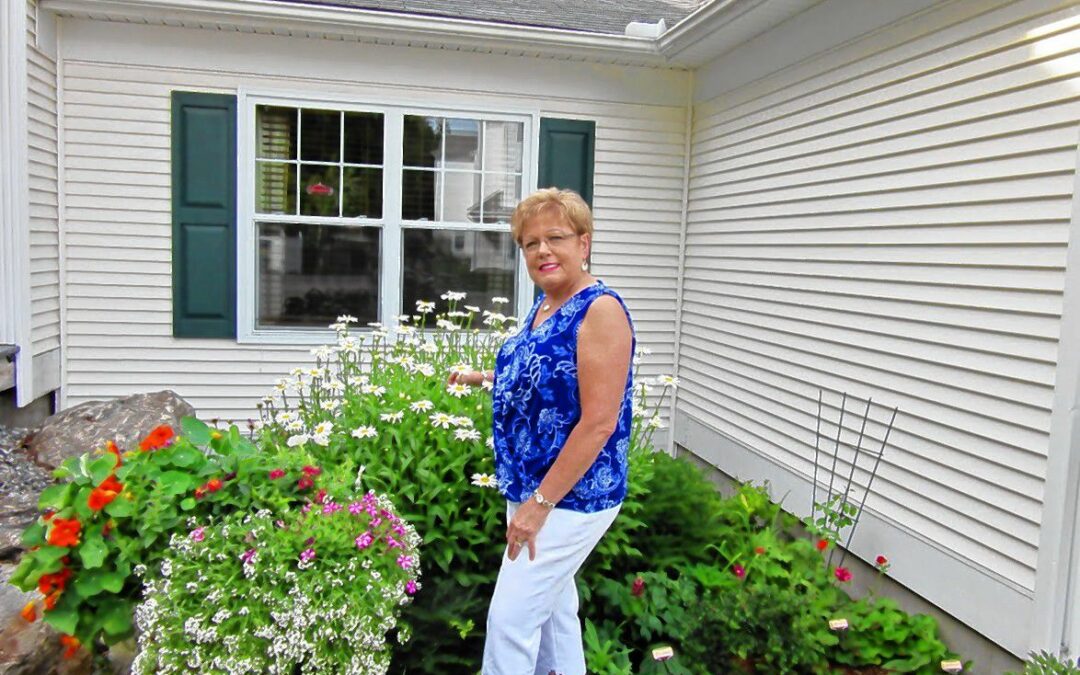Longer days are here and spring is due to arrive this month. Are you thinking about perhaps starting a garden of your own this year? If you are, then you are among many others who have decided to try their hand at gardening as of late.
Start with a “small” garden. This applies to both vegetable and flower gardens. You can always expand your garden whenever you are ready to do so. The Chinese have a saying, “Praise large gardens, plant small ones.”
Let’s concentrate on creating your first flower garden. A flower garden can be grown in either sun or shade, depending on the plants you choose to grow. A sun garden requires 6 to 8 hours of direct sunlight whereas a part sun/part-shade garden only needs 4 to 6, preferably morning sun. Decide where you will place your garden.
Ideally your garden spot should be visible from a window or two in your home or be situated where you will pass by it regularly in order to get the most enjoyment from it. And be sure to have your garden somewhat close to a water source, like your garden hose. Carrying water is not fun.
Measure the area you are considering – a 10 x 10 foot square or a rectangle of similar square footage would be a good size to start with.
Your first step will be to remove all the grass and weeds in the area you have chosen to plant your new flower garden. Next, you will need to work the soil with a garden fork or hoe or have it roto-tilled to loosen up the soil and prepare it for planting.
After your ground is cleared, you can start thing about plants.
Sketch the garden out on a piece of paper, somewhat to scale and start planning. Remember to select taller plants for the back of your garden with your intended plantings gradually decreasing in height toward the front of the garden. Also consider each plant’s sun requirement so that you have plants with similar sun needs growing happily together.
As with all living things, plants have essential needs that must be met in order for them to grow and flourish: Sun, water and soil and different types of plants have their own specific needs within these categories.
For example, some plants can tolerate more sun than others and some plants prefer more moisture in their soil. It is not really that difficult to assemble a lovely variety of flowering plants to enjoy. Just be sure to read the labels when you shop for your new plantings or to consult the employees of the garden center you choose to frequent and go from there.
Soil is the starting point of every garden because this is where your plant’s roots will live. The roots anchor the plant and take up the water and nutrients from the soil that the plant needs to thrive. The roots must have room enough to grow therefore the soil needs to be workable so that the roots can, well “root.”
You will need to determine what type of soil you have for your new garden? Sandy, loamy, or clay? Pick up a handful of moist soil and rub it between the palms of your hands. If your soil is clay, it will become a sticky ball; if it is loamy it will crumble easily and if it is sandy, it will run quickly through your fingers.
Clay soil does not drain well and roots may have a difficult time penetrating the soil to establish themselves.
Sandy soil not only lets water through too quickly, but it allows added nutrients to leech off before they can do their job.
Loam is the best type of soil to have and if you don’t already have it, you can “make it” by adding compost to your existing soil. This can be purchased from your local garden center.
Regardless, it is a good idea to add compost to your soil initially and then annually as compost is made up of decomposed plant material and it releases nutrients into the soil throughout the growing season.
Getting your soil tested is always a good idea, although it is more important when you are planting a vegetable garden or growing fruit.
Garden centers usually carry soil testing kits which are adequate but if you really want to know what your soil may need to reward you with a productive garden, contact the UNH Cooperative Extension Service to request a form.
Just follow the directions and send in the completed form, a check for $20 and a soil sample to the lab at UNH. In return, you will receive detailed information about what your soil may be lacking and advice on what you need to do to improve it.
The Extension Service’s “Education Center and Info Line” is a great reference source to contact with any of your gardening questions. This public service is staffed by professionals and trained volunteers (Master Gardeners) who will provide you with practical solutions to your questions or concerns.
Now for the flowers. There are two types of plantings to consider when you are planning out a flower garden: annuals and perennials.
Annuals, as their name implies, flourish for just one year’s growing season, but they are in constant flower with proper “deadheading” and good care. Annuals are not “hardy” or frost resistant, therefore need to be replanted year to year.
Perennials on the other hand, come back the next year, however their bloom time is shorter, usually 4-6 weeks. Perennials die back in the fall and re-emerge in the spring/summer. They generally multiply over time, giving you additional plants to enjoy in that garden or to divide in the fall and place elsewhere — perhaps with a fellow gardener for their garden. Perennials are more expensive than annuals however they are an excellent investment.
Start slow and don’t overplant your garden, keeping in mind that the smallish plants you will first put in the ground will grow bigger.
Your initial plantings make look a bit sparse initially, however they will fill in throughout the growing season and before you know it, in the case of perennials, you will be wanting to thin them out.
Of course, you can always grow your own plants from seed, but this requires a lot of patience as it is time consuming and can be tedious. And some types of flowers are much easier to grow from seed than others; however, if you do decide to grow any flowers from seed and they do well as seedlings and mature into the flowers pictured on the seed packet they came in, this is indeed gratifying and well worth the TLC you expended.
Basic tips for growing from seeds include:
1) Pick the right place and the right plants for your garden’s location and label them;
2) Be good to your soil and feed it with either liquid or granular fertilizer designated for flower gardens (just follow the manufacturer’s directions or consult your garden center);
3) Don’t plant too soon in the spring — around Memorial Day is usually a good time to avoid a killing frost;
4) Water well. Most plants need an average of 1 to 2 inches of water a week (more when it is really hot) and it is best to water heavily at one time rather than sporadically. This method forces the plant roots further down into the soil to seek moisture rather than risking exposure to heat and dryness nearer the top;
5) Weed regularly. Weeds compete with your plants for moisture and nutrients. Don’t let them get the upper hand by allowing them produce seeds and spread! Use a hoe if there is room to work it or a hand tool or just your fingers to dig up those rascals before they take over. Mulching with an organic matter is a good way to smother the weeds and it gives your garden a nice appearance as well;
6) Document your garden year. Take photos. And maybe start a journal, noting what you planted, when they bloomed, etc. Note what plants you would plant again, or more of and what plants you would not for whatever reason.
Gardening is challenging, rewarding, sometimes mystifying and definitely uplifting. It is good exercise, it gets you outdoors and it provides you with beauty that you created!
(Joyce Kimball is a certified UNH Cooperative Extension Master Gardener and member of the Bow Garden Club.)
If you grow
Here are just a few examples plantings requiring different amounts of sun and shade.
Annuals: (Full sun) Ageratum, Cleome, Coreopsis, Cosmos, Geranium, Marigold, Petunia, Salvia, Shasta Daisy, Sunflower, Yarrow, Zinnia.
Perennials: (Full sun) Aster, Bee Balm, Clematis, Coneflower, Daylily, Hollyhock, Peony, Phlox, Roses, etc.
Annuals: (Part sun) Bacopa, Begonia, Impatiens, Larkspur, Lobelia, Viola.
Perennials: (Part sun): Anemone, Astilbe, Balloon Flower, Baptisia, Bleeding Heart, Columbine, Coral Bell.
gar·den·er n. “One who works in or takes care of a garden for pleasure or profit”
CONTACT INFORMATION FOR UNH Cooperative Extension
CALL: 1-877- EXT-GROW (1-877-398-4769) INFO LINE HOURS: 9 am – 2 pm M-F


 View Print Edition
View Print Edition
What a wonderful article, and so informative! So happy I was privileged to ready Ms. Kimball’s valuable article and information that is appropriate for gardeners anywhere. Thank you!